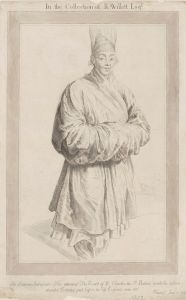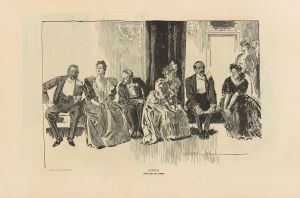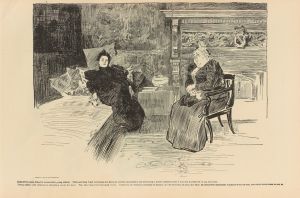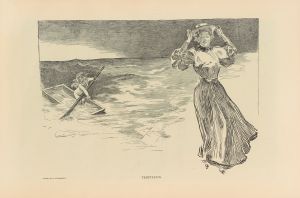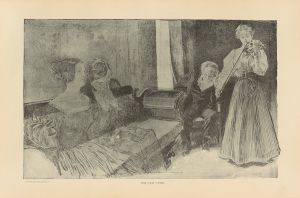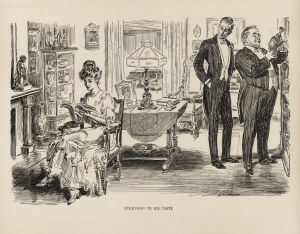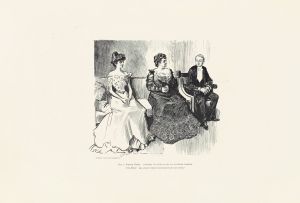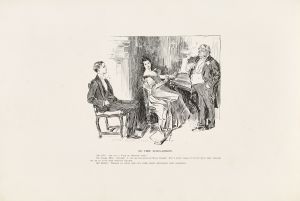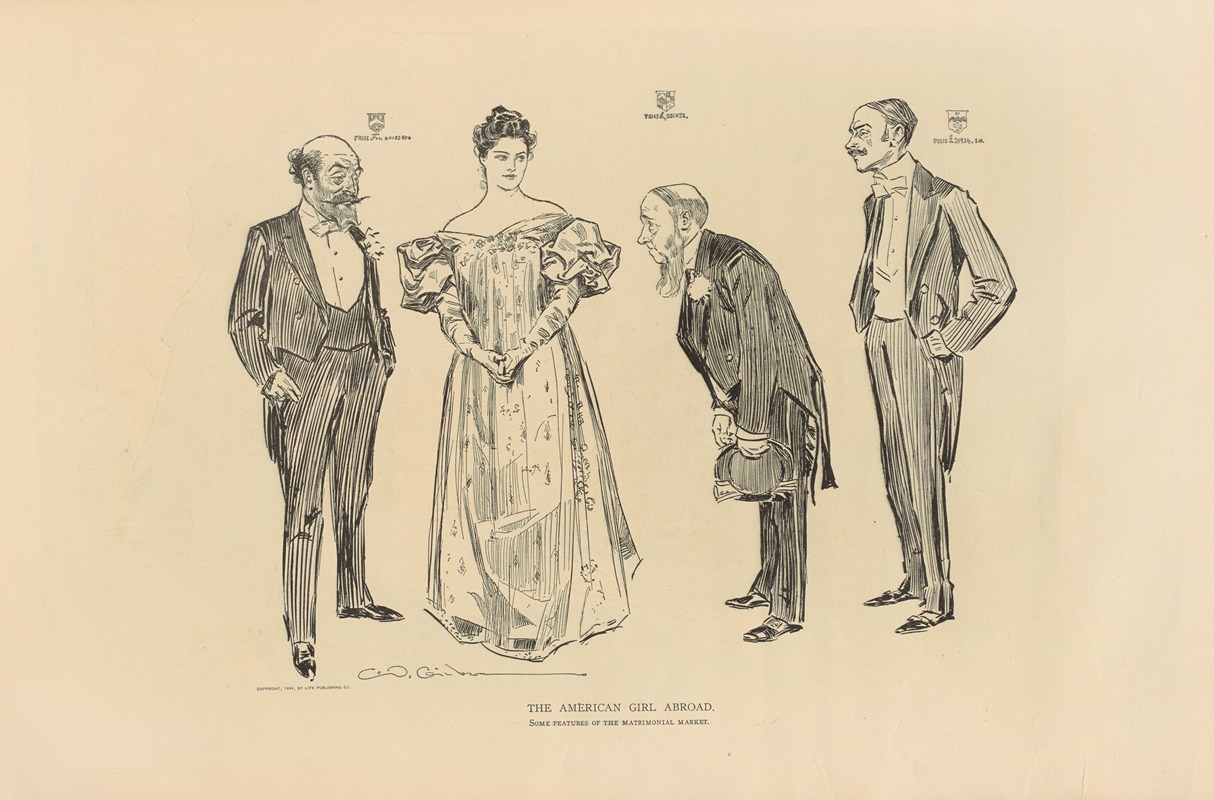
The american girl abroad. Some features of the matrimonial market
A hand-painted replica of Charles Dana Gibson’s masterpiece The american girl abroad. Some features of the matrimonial market, meticulously crafted by professional artists to capture the true essence of the original. Each piece is created with museum-quality canvas and rare mineral pigments, carefully painted by experienced artists with delicate brushstrokes and rich, layered colors to perfectly recreate the texture of the original artwork. Unlike machine-printed reproductions, this hand-painted version brings the painting to life, infused with the artist’s emotions and skill in every stroke. Whether for personal collection or home decoration, it instantly elevates the artistic atmosphere of any space.
"The American Girl Abroad: Some Features of the Matrimonial Market" is an illustration by Charles Dana Gibson, an influential American graphic artist best known for his creation of the "Gibson Girl," an iconic representation of the American woman at the turn of the 20th century. This particular work was published in 1901 and is part of a series that humorously and critically examines social customs and the roles of women in society.
Charles Dana Gibson was born on September 14, 1867, in Roxbury, Massachusetts. He began his career as an illustrator in the late 19th century, contributing to various magazines such as Life, Harper's Weekly, and Scribner's. His illustrations often depicted the societal norms and expectations of the time, with a particular focus on the lives and roles of women.
The "Gibson Girl" became a cultural phenomenon, symbolizing the idealized American woman—independent, confident, and elegant. Gibson's illustrations captured the changing attitudes towards women's roles in society, reflecting the early stirrings of the women's suffrage movement and the evolving social landscape of the United States.
"The American Girl Abroad: Some Features of the Matrimonial Market" is a satirical piece that comments on the transatlantic marriage market, where wealthy American heiresses would marry into European aristocracy. This practice was relatively common during the Gilded Age, as American families sought to gain social prestige and European nobility sought financial stability. Gibson's illustration humorously critiques this phenomenon, highlighting the transactional nature of such marriages and the cultural differences between Americans and Europeans.
The illustration itself features a young American woman, presumably a "Gibson Girl," surrounded by European suitors. The composition and expressions of the characters convey a sense of both admiration and opportunism, as the suitors vie for the attention of the wealthy heiress. Gibson's detailed and expressive line work captures the nuances of the social dynamics at play, making a pointed commentary on the commodification of marriage and the intersection of wealth and social status.
Gibson's work, including this illustration, played a significant role in shaping public perceptions of gender roles and societal expectations during the early 20th century. His ability to blend humor with social critique made his illustrations both popular and influential, resonating with a wide audience and contributing to the broader cultural discourse of the time.
In summary, "The American Girl Abroad: Some Features of the Matrimonial Market" by Charles Dana Gibson is a satirical illustration that critiques the practice of transatlantic marriages between wealthy American women and European aristocrats. Through his depiction of the "Gibson Girl" and her suitors, Gibson offers a humorous yet pointed commentary on the social customs and gender roles of the early 20th century.








